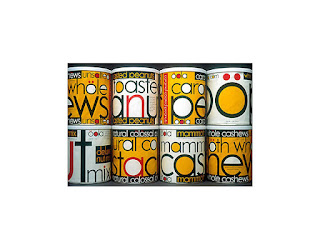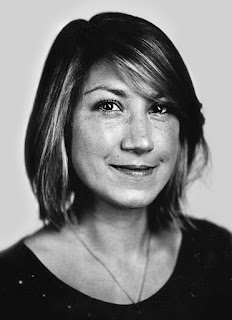Wim Hendrik Crouwel is an influential typeface designer who was born in Groningen in 1928. His most famous designs include New Alphabet, which was made up of only horizontal and vertical strokes, Fodor Alphabet, and Gridnik, which was an octagonal typeface made for a typewriter that was never released. The font "Atmosphere," by Jay Vidheecharoen was inspired by Wim Crouwel's New Alphabet, and Jonathan Hill's "LineWire" is an octagonal typeface based on Wim Crouwel's work.
Thursday, September 17, 2015
Sunday, September 13, 2015
Deceased Designers: Max Bill
Max Bill worked as an architect, painter, graphic artist, and sculpturist in Zurich before becoming a product designer. His works took on their own independent character over time with his use of geometry and abstraction. He was very influential on designers and played a crucial role in the development of modern art.
Sources: http://www.moma.org/collection/artists/559, http://www.max-bill.com/
Sources: http://www.moma.org/collection/artists/559, http://www.max-bill.com/
Deceased Designers: El Lissitzky
El Lissitzky was a Russian born designer, photographer, typographer, and architect who has continued to be a major influence on designers long after his death. He designed propaganda and exhibitions for the soviet union and was able to maintain his position as Head of Exhibitions under Stalin even when stricter regulations were put in place for designers.
source: http://www.designishistory.com/1920/el-lissitzky/
source: http://www.designishistory.com/1920/el-lissitzky/
Deceased Designers: Robert Massin
Robert Massin was a French graphic designer born in 1925. He is internationally revered and well known due to his typographic experimentations. His works have been published internationally in books about the history of design, and Massin himself wrote over thirty books of his own.
source: http://www.designculture.it/interviews/robert-massin.html#start
source: http://www.designculture.it/interviews/robert-massin.html#start
Deceased Designers: Max Huber
Max Huber was born in Switzerland in 1919. He always worked as a freelance designer, and was able to find a balance between the needs of his clients and his need to experiment. He was particularly enthusiastic about his designs for jazz album covers and posters/publications for Jazz events.
source: http://www.iconofgraphics.com/Max-Huber/
source: http://www.iconofgraphics.com/Max-Huber/
Deceased Designers: Paul Rand
Paul Rand, born Peretz Rosenbaum, grew up in Brooklyn, New York as an orthodox Jew. He studied at the Pratt Institute and the Parsons School of Design. Rand taught design at Yale University and did design work for companies such as ABC, IBM, and UPS. He was inducted into the New York Art Directors Hall of fame in 1972.
Source: http://www.paul-rand.com/
Tuesday, September 8, 2015
Living Designers: Erik Speakermann
Erik Speakermann is a German typographer and designer. He and his wife founded FontShop together, which was the first mail order distributer for digital fonts. Speakermann has also done work for majorly well-known clients such as Audi and Volkswagen. In 2007, he was the first designer to be elected into the European Design Awards Hall of Fame.
Source: https://en.wikipedia.org/wiki/Erik_Spiekermann
Source: https://en.wikipedia.org/wiki/Erik_Spiekermann
Living Designers: Paula Scher
Source: http://www.aiga.org/medalist-paulascher/
Living Designers: Jessica Hische
"Jessica Hische is a letterer, illustrator, and crazy cat lady known for her silly side projects and occasional foul mouth." She has done advertisements for extremely well-known clients such as Starbucks, Wes Anderson, Tiffany & Co., Victoria's Secret, and Target.
Sources: http://jessicahische.is/anoversharer
Living Designers: Wolfgang Weingart
Wolfgang Weingart is a Swiss type designer and instructor at the Schule Für Gestaltung Basel. His type designs contain a certain spontaneity and carelessness that was juxtaposed by the more typical Swiss orderliness of his time. Weingart was presented with the AIGA Medal at "Bright Lights: The AIGA Awards," on April 19, 2013, in New York City
Source: http://www.aiga.org/medalist-wolfgang-weingart/
Living Designers: Neville Brody
Neville Brody attended both the London College of Printing and the Hornsey College of Art. Born and raised in London, Brody says he has been drawing since before he could walk and could never see himself in any field other than Design. His name was made popular while he was Art Director for The Face magazine when it was launched in the 1980's.
sources: http://www.designboom.com/design/interview-with-graphic-designer-neville-brody-10-10-2014/, https://en.wikipedia.org/wiki/Neville_Brody
Tuesday, September 1, 2015
Who is Adrian Frutiger?
Born in Switzerland in 1928, Adrian Frutiger was a very influential typeface designer. Frutiger studied at the Kunstgewerbeschule (School of applied arts) in Zurich, where he primarily focused on calligraphy – a craft that favored the brush as opposed to drafting tools. He went on to work for Deberny & Peignot foundry, where he began working on his own font designs.
Frutiger created over thirty different typefaces, but he is most well known for Frutiger and Univers, which are still used by many designers today. One of his most influential fonts, Univers, had twenty-one fonts of different line weights and variations within the type family all arranged on the "Univers grid."
"The Univers Grid" showed Univers arranged according to line weight and kerning, which was an effective tool for organizing the different versions of the font. This system helped designers understand how to use the different typefaces within Univers. The grid that Frutiger created for his typefaces continues to resonate with designers today. It is not only a tool for understanding a typeface, but also makes it easier for designers to combine different weights within the type family by laying them out in an organized way. By creating
Frutiger created over thirty different typefaces, but he is most well known for Frutiger and Univers, which are still used by many designers today. One of his most influential fonts, Univers, had twenty-one fonts of different line weights and variations within the type family all arranged on the "Univers grid."
"The Univers Grid" showed Univers arranged according to line weight and kerning, which was an effective tool for organizing the different versions of the font. This system helped designers understand how to use the different typefaces within Univers. The grid that Frutiger created for his typefaces continues to resonate with designers today. It is not only a tool for understanding a typeface, but also makes it easier for designers to combine different weights within the type family by laying them out in an organized way. By creating
Subscribe to:
Posts (Atom)








































